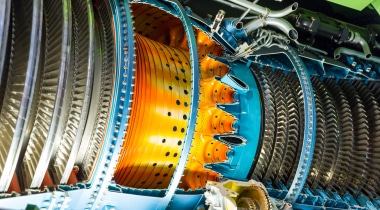China has responded to U.S. President Donald Trump’s threat of trade tariffs with a list of 106 items of commercial U.S. goods that China will impose a 25 percent tax on if the U.S. tariffs move forward. Included in this list are U.S.-built aircraft, namely Boeing. Fears of how these tariffs may affect the global aviation industry have already driven down stock prices.
So, how high are the stakes in this potential trade war? According to U.S. trade data, the United States exported $15 billion worth of aircraft to China in 2016. This ranks aircraft on par with other major U.S. exports to China, including automobiles and agricultural products like soybeans, both of which China also targeted for tariffs. But how exactly could U.S. trade tariffs affect Boeing and the wider aviation industry?
Which Boeing Models Are Affected By Chinese Tariffs
The retaliatory Chinese tariffs would apply specifically to aircraft weighing between 15,000-45,000 kg. Industry analysts say these tariffs would only affect Boeing’s current workhorse 737 series – which was already being phased out – and the smallest version of the replacement 737 MAX. When combined, these orders represent roughly 5 percent of Boeing’s 737 backlog.
While some have argued that, if things really heat up, China could cancel its existing orders for Boeing aircraft, that’s unlikely. With Boeing rival Airbus experiencing its own significant backlog, it would be difficult to source new aircraft manufacturing elsewhere in the industry. It bears mentioning that a good deal of the backlog for both companies comes from the rapidly-expanding aviation market in China. In fact, China is Boeing’s largest single market, with Chinese aircraft sales accounting for nearly 20 percent of Boeing’s total sales in 2017.
Effects on Chinese Aviation
China has long been working on manufacturing their own aircraft to compete with the Boeing 737 or Airbus A320. The Commercial Aircraft Corporation of China (COMAC), established in Shanghai, hoped this comparable C919 model would quickly enter the aerospace sphere with global demand. One of the model’s promising features was a lower price point. While the aircraft is slowly gaining traction, the industry has not adopted this model as the C919 has struggled to meet all the requirements of the U.S. Federal Aviation Administration. The tariffs imposed may shift the industry to revisit the C919 more heavily.
Warning Shot from Chinese
If you read the above paragraphs and thought that these tariffs don’t actually amount to much, you’re not alone. After exploring the details provided by Chinese trade representatives, most experts agree that these proposed tariffs are more of a “warning shot,” aimed at showing the U.S. government that they are ready to meet U.S. trade barriers with more of their own, targeted at commercial industries that they know carry political capital in the U.S. – aviation, automobiles, agriculture – with the hope of triggering formal trade talks to come to a more amenable agreement that satisfies the political and economic needs of both parties.
Other Effects of U.S.-Chinese Tariffs on Aviation Industry
Even without the tariffs on specific Boeing models – however benign they may be – Boeing would likely still feel the pinch if these hostilities move forward. China is a major supplier of cheap aircraft manufacturing components, which are also on the U.S. list of proposed tariffs. Of the 1,382 items on the USTR proposed tariff list, 32 are specifically targeted aircraft components. And this doesn’t cover the raw materials that provide a good portion of an aircraft’s structure: if the U.S. tariffs move forward in their current form, there would be a 25 percent tax levied on steel and a 10 percent tax on aluminum coming to the U.S. from China.
What Higher Metal Prices Could Mean for Aircraft Manufacturing
Boeing’s 737 series is comprised of 70 percent aluminum. The comparable Airbus A320 contains roughly the same percentage. Even considering the substantial amount of aluminum used in the manufacturing of these aircraft, a possible 10 percent increase in the price of aluminum would account for only a 2 percent total price increase for new aircraft.
The Long and the Short of It
So, what does this all mean? Well, it’s hard to say right now. But if the Chinese government wanted to use Boeing as a proxy in this trade battle, it may have worked. Boeing said that it would engage in talks with both the U.S. and China to prevent this disagreement from affecting the global aerospace industry.
It remains to be seen how this will all play out, but with aviation playing such a key role in both the U.S. and China, there is reason to believe that cooler heads may prevail and an agreement will be reached that suits both parties and spares the global aerospace industry.
Read More from Proponent
MRO Europe Conference Highlights Challenges and Opportunities for MROs and Aerospace Distributors



















